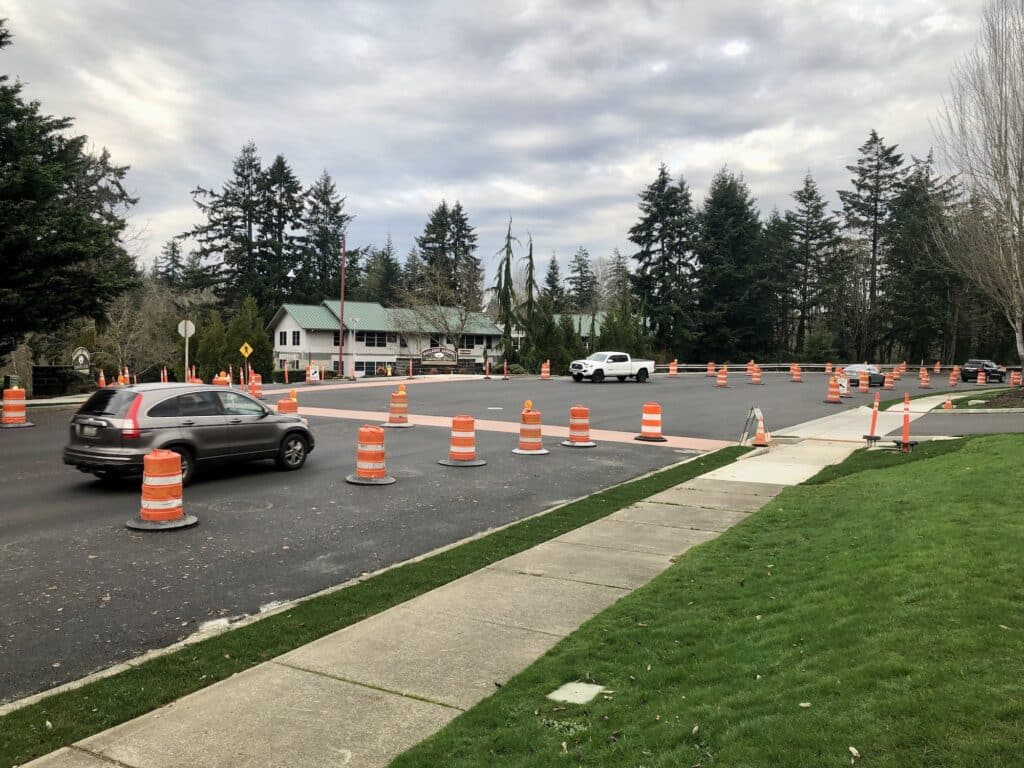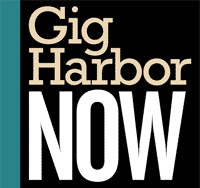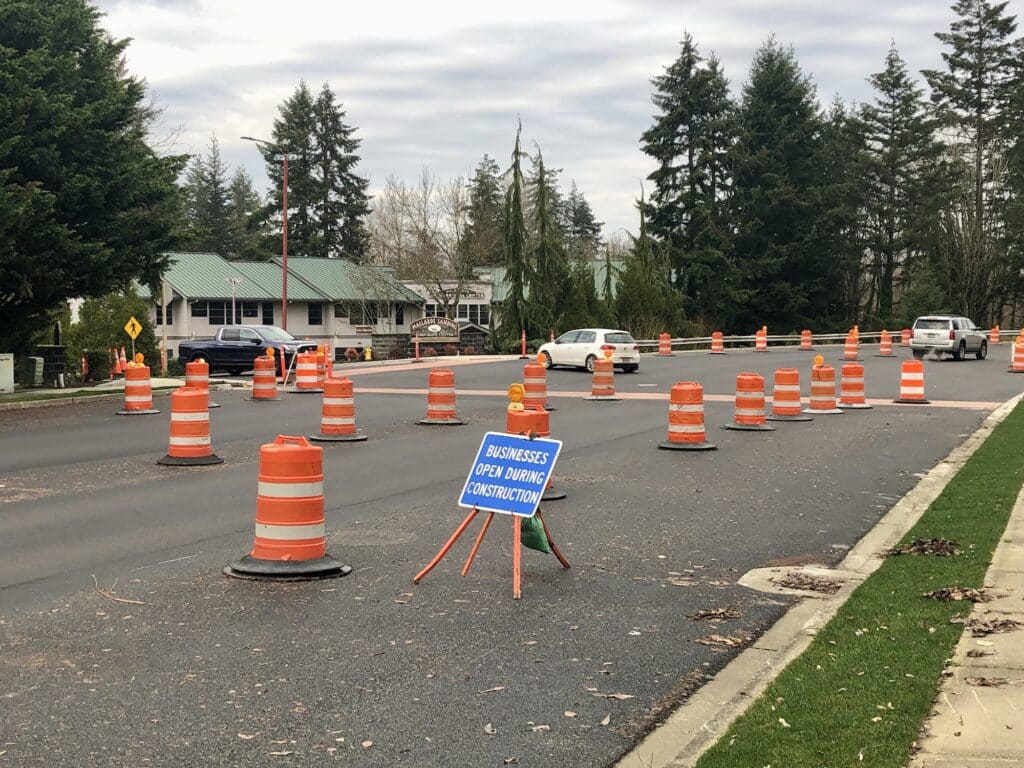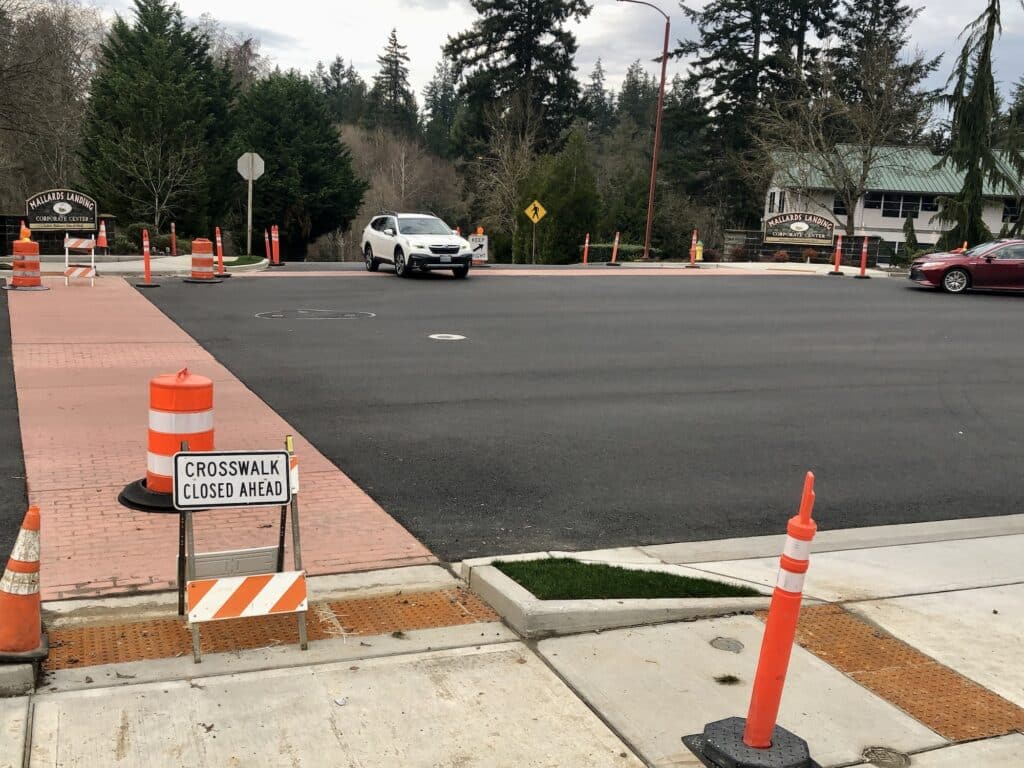Government Transportation
Supply chain delay suspends Wagner Way traffic signal project
Rows of orange barrels channel drivers through the Wollochet Drive-Wagner Way intersection. No workers are around. The project just west of Highway 16 appears abandoned.
Activity will resume, however, in a few months.
The $1.6 million project has been suspended because a traffic signal system it centers around and streetlight poles are backordered. Contractor Active Construction, which repaved the junction in October, ran out of tasks.
Delayed until spring
“Contract time is in the process of being suspended effective Jan. 2, 2025, due to material acquisition delay,” Gig Harbor City Engineer Aaron Hulst wrote in an email on Jan. 10. “Signal installation and roadway striping will take place in the spring and potentially run into early summer, depending on the accuracy of the expected material arrival date of late March, 2025.”
The city wasn’t caught off guard by the supply chain delay. Shipments of traffic signal components and streetlight poles are lagging nationwide, and have been since the 2020 pandemic.
“I think that was anticipated,” Hulst said. “Since COVID we’ve known about these types of delays with all of our projects. We kind of expect it now. When we execute a contract we try to make sure they order as early as possible, but it’s pretty much out of our control. It’s something that’s been really frustrating since COVID happened.”
Much has been completed
Active Construction signed the contract in May and was given notice to proceed on July 8. Since then, the contractor has completed much of the job. Crews have installed concrete crosswalks, sidewalks, ADA curb ramps, driveways, curbs and gutters. They’ve chipped out and replaced the asphalt roadway. Bases have been poured for the signals and streetlights.
They have yet to install a new Rectangular Rapid Flash Beacon (RRFB) system and street lighting at a trail crossing on Wagner Way.
The orange traffic barrels remain in place because road striping hasn’t been possible because of cold and rainy weather, Hulst said.
The project is the second priority on the city’s six-year Transportation Improvement Program for a reason. (It’s behind Phase 1 of Burnham Drive improvements, which is also underway.) Though there isn’t heavy traffic entering Wollochet Drive from Wagner Way or the Shell mini-mart across the street, it can be tricky, and dangerous.
Difficult to enter Wollochet
Drivers must look three directions — including east, where a corner restricts the view — and dart across during an opening. Misjudgments and impatience contributed to 37 accidents in the vicinity since 2018, according to police records. The mostly low-speed crashes inflicted 14 injuries.
At times there are no Wollochet openings for cross-street drivers to vault into. The arterial carries about 17,000 daily vehicles, which can get jammed up at four traffic lights crammed into 7/10 of a mile between Hunt Street and Kimball Drive. The Wagner Way signal will be the fifth in that stretch. They will all be synchronized, Hulst said.

The project will resume in the spring when traffic signal components and streetlight poles arrive. Photo by Ed Friedrich
A couple upcoming projects could also help alleviate the crowding. Currently being designed are a right-turn lane from eastbound Highway 16 to Wollochet and a right-turn lane from Wollochet to westbound Highway 16. Right-turning vehicles will no longer add to the backup.
“Our goal is to have them to construction in ’25,” Hulst said. “We will know more as design progresses.”
Traffic is only going to increase. Wagner Way didn’t even exist 25 years ago. It was pushed through to connect to 72nd Street, creating a shortcut between Wollochet and Skansie Avenue. Since it opened, a nature park, retirement home, preschool and multiple professional centers have sprung up along Wagner, and housing developments off 72nd. Now Wagner Way carries about 2,000 vehicles per day, according to the city.
Shared bike lane, flashing arrow in store
Wollochet Drive is classified as a collector roadway with commercial mixed-use developments. According to the city’s Public Works standards, this type of street is required to have a bike lane on both sides. However, there’s not enough space to add separate bike lanes without affecting nearby wetlands. Instead, the city will use “sharrow” symbols to indicate a shared use lane for cars and bikes.
The city plans to install its first flashing yellow arrow at the intersection. Recent federal studies suggest that including a flashing yellow arrow increases driver awareness and improves safety. A solid red arrow means stop, no turns allowed. A solid yellow arrow means prepare to stop, the light is changing. Flashing yellow means yield to pedestrians and cars, turn left if safe. And solid green arrow means left turn allowed, proceed with caution.
The Washington State Transportation Improvement Board awarded $1.3 million for the project. Further costs will come from the city’s transportation benefit district and transportation impact fees, Hulst said.



